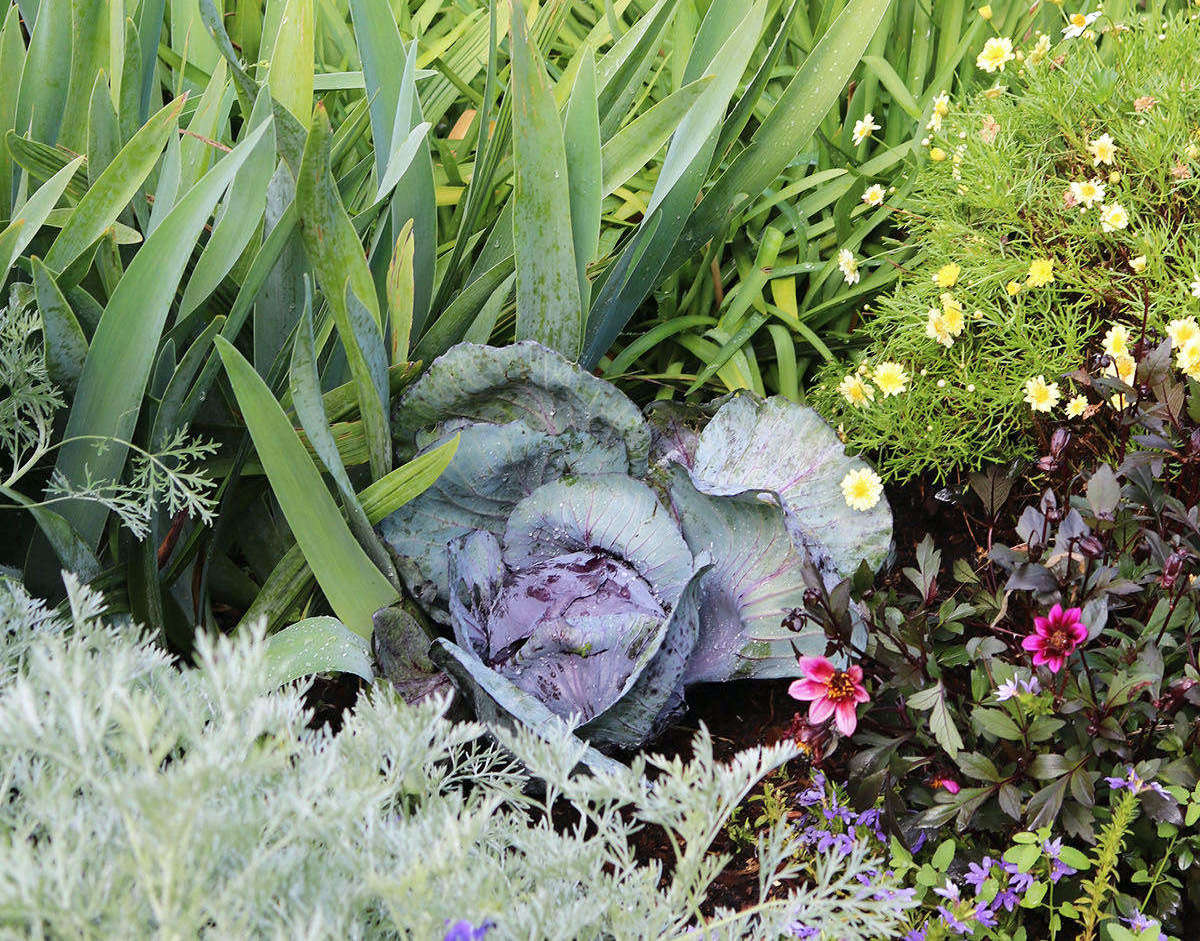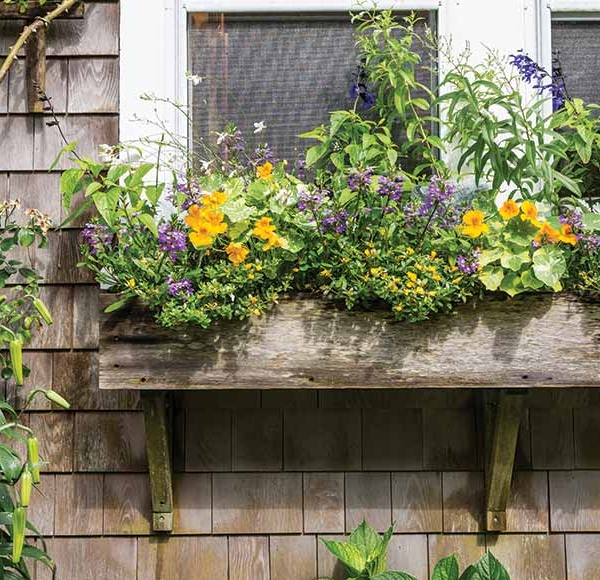Cabbage, Brassica oleracea
When I think of cabbage, my brain immediately goes to Peter Rabbit sneaking into Mr. McGregor’s garden to steal crops. Fortunately, unless you’re a rabbit, there’s no need for trespassing and theft if you want to enjoy fresh cabbage: You can grow your own rather easily.
Here are some tricks and tips for growing cabbage:

When autumn begins to elbow summer out of the way, it’s time to ponder cool season crops. A standout fall vegetable is cabbage. This one to two foot tall and wide vegetable really appreciates cooler weather and shorter days—which means now’s the perfect time to shop for starts and get them in the ground. But guess what? You can plant cabbage in the spring, too (just plant them in the garden four weeks before your last spring frost date).
You can also grow it from seed. For this economical method, plant seeds 1/4 inch deep, six to 12 inches apart, in rows one to two feet apart. For a fall crop, seeds should be planted mid-summer. For your spring planting, plant your spring cabbage between taller plants like corn so that your cabbage stays cool and doesn’t sulk from the heat. When it comes to ideal temperatures, cabbage is a bit like Goldilocks: It must be grown before the crushing heat of summer, or the plant will wither or bolt, or before fall’s freezing temperatures. The ideal temperature for cabbage to thrive is around 60 to 65 degrees F.
This versatile vegetable is packed with calcium and vitamins A, B, and C. Plus, cabbage is tasty raw or cooked. I like to cut a head of green cabbage into one-inch-thick slices, rub avocado oil on them, season with salt and pepper, and then roast the slices at 400 degrees in the oven. I turn them over after the first side browns a bit. Then when they are soft, I take them out and drizzle them with a lemony thyme dressing.
Cheat Sheet

-
- Avoid planting cabbage near other Brassicas such as broccoli, as they both attract the same problems associated with pests and disease. Instead, plant them with other cool season plants, like beets, onions, carrots, and parsnips.
- Because of these plant’s small and sturdy size, they will not need any cages or support system.
- Bees and other pollinators will visit your plant but only if you aren’t growing your cabbage as an annual. Flowers will only form on the second year. Most people grow cabbage as an annual as the quality diminishes the second year.
- Cabbage can be grown in a plot, raised bed, or a container that’s at least a foot wide and deep, with sufficient drain holes.
- Looking for a pop of color in your vegetable bed or your cooking? Grow purple cabbage.
Keep It Alive

- Cabbage grows best in sunny spot in loamy rich soil that is moderately moist but well draining. Add mulch around your plants because consistent water is a key factor in head development.
- Did you know that cracked cabbage heads are a result of uneven watering or from harvesting too late?
- Tolerating temperatures down to 20 degrees F, cabbage can be grown even in the winter if you live in a mild climate.
- If your leaves start yellowing, fertilize your plant with composted manure or fish emulsion to boost nitrogen.
- Many different diseases can affect cabbages. Look for resistant cultivars.
- Begin harvesting after the heads have formed and when they feel solid and substantial. Tip: Smaller heads are sweeter. Use a sharp and sturdy knife to cut the head above the loose outer leaves if you want to keep growing your cabbage.
- Always read your seed packet or garden tag to learn how many days from seed/start to harvest, but in general it takes about 2 months.
See also:
(Visited 1 times, 1 visits today)


